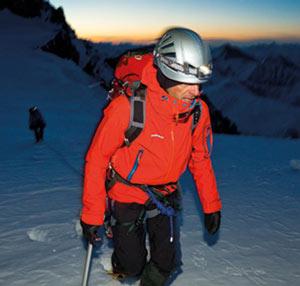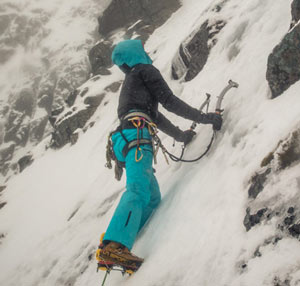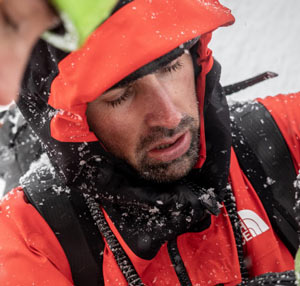Beginner Winter Climbing Tips
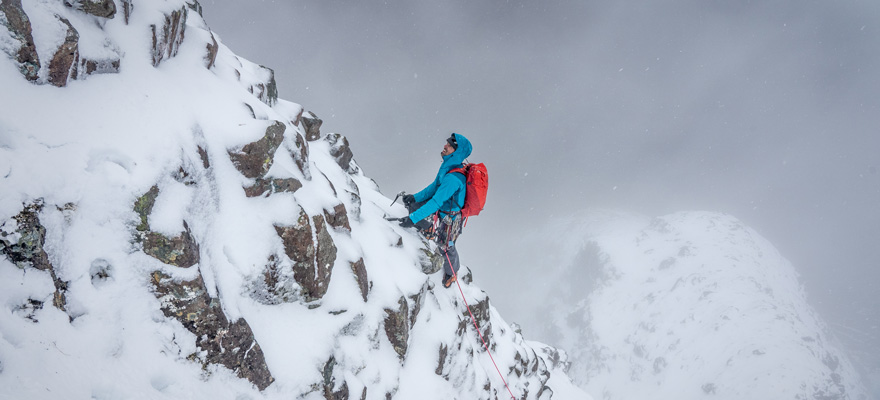
Winter climbing is one of the most rewarding sports you can try through the colder months, and not as intimidating as you may think. If you've always been curious about winter climbing, or are new to the sport, then this list of top winter climbing tips for beginners will get you started on the right foot.
Equipment
- Clothing
- Hardware - axes, crampons & compatible boots
- Maps
- Compass
- Guidebook
- Headtorch
- Emergency shelter
The list can become endless, depending on the scale of your winter climbing ambitions, but the above equipment is a really good starting point. Our mountaineering buying guides have some great pointers on the kit you need to get started.
It's also worth mentioning that when mixed climbing, your gear can be placed under a lot of stress (banging your nuts into cracks tends to leave them dented!), so checking them regularly for deformation and damage is important. You will also need specialised gear for mixed and ice routes and at some point will need to learn the basics about maintaining winter gear, like sharpening crampons and axes.
Understand the Grades
Winter routes are graded slightly differently to other climbing so it’s worth taking some time to familiarise yourself. However, the fundamentals are similar, with routes graded on difficulty and commitment. The below guide is taken from BMC.
Grade I: The easiest climbs. Straightforward snow slopes up to 50 degrees, or simple scrambles on snowed up rock. One ice axe is enough.
Grade II: Steeper sections with ice, but still normally less than vertical. Mostly climbable with one axe, but some may require two.
Grades III+: Increasingly long sections of steep climbing and commitment. Two axes are necessary.
Above III: individual crux pitches are also graded. For example, Point Five Gully at V,5 is a benchmark V, while a well-protected hard mixed climb might be graded V,7. Zero Gully is less technical but serious so gets V,4.
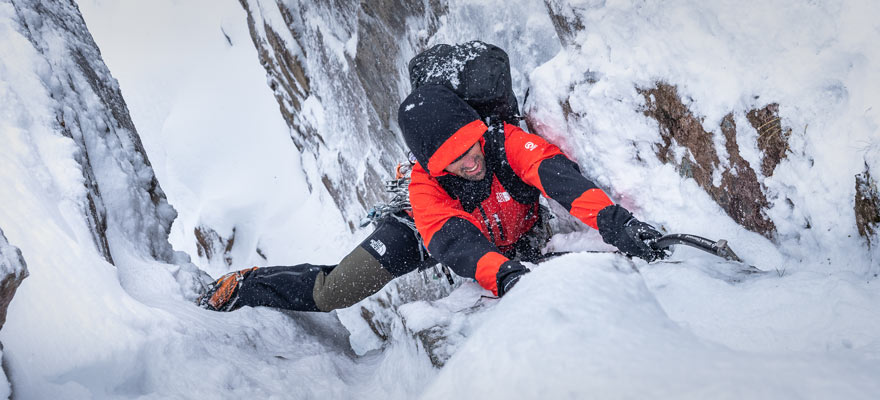
Technical Skills
Ropework, crampon use and axe use, how to build snow anchors, what gear to use and how to use it efficiently and safely. These are all skills you will need to master to minimise the risks in the mountains in winter. The best way of picking these up is with an experienced mentor, or ideally a qualified instructor. There are plenty of options for this, with Glenmore Lodge offering some excellent choices.
General Skills
Technical skills are just the start of the knowledge you need to keep safe in the winter mountains. There are a number of other more general skills specific to mountaineering and climbing in the winter months that you probably won’t have experienced before. Again, the best and fastest way to master the basics is to either head out with an experienced friend or an instructor/guide.
Experience and Mountain Sense
Getting experience on easy routes in different locations and conditions will give you a good grounding for more difficult climbs. The more you climb, and the more varied the conditions, the better you will be set up for when the weather or conditions takes a turn for the worst.
This comes hand in hand with mountain sense which is earned, not book-learned. It is crucial that you master the basics and are confident in the mountains as winter conditions can change rapidly.
A good starting point is to go winter walking in Scotland and make sure you cover Grade I terrain. Anyone serious about staying safe walking in Scotland in the winter should have the skills and awareness to recognise and safely deal with the hazards posed by Grade I ground. Practice navigation in poor conditions in the summer in an unfamiliar area. Go winter walking on relatively easy ground on the less remote hills of Snowdonia or the Lakes using Crampons where needed. The more experience you have, the better prepared you will be for winter climbing.
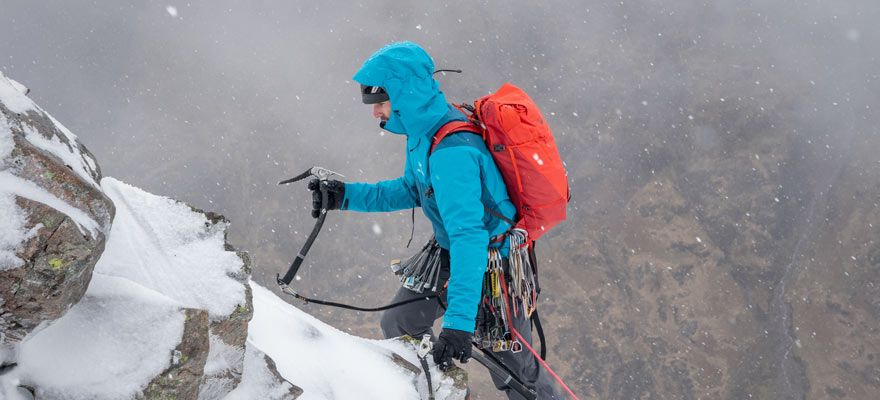
Fitness
You’ll struggle to find a sport that rivels winter climbing for both a physical and mental workout. Being out in the cold means your body uses more energy to keep warm than in the summer, you’re carrying more weight in gear and walking through deep snow adds plenty of resistance. It’s therefore key to ensure you have a good level of fitness before you get started in the sport.
Naturally, summer climbing and bouldering are perfect for making sure you have the strength and stamina for routes. However, winter climbing often involves walk-ins upwards of 1.5 hrs and in tough conditions, so making sure you have a good cardio base is also key. Running and cycling are perfect to build your fitness up.
Check The Conditions
MWIS, the Mountain Weather Information Service, provides up to date weather information for the UK and SAIS, the SportScotland Avalanche Information Service, provides Avalanche information for Scotland.
A winter mountaineering or backcountry safety course is highly valuable in giving you skill on how to analyse conditions before and whilst on the mountain. Being able to interpret forecasts and weather changes is key to staying safe and making good decisions. You will also pick up key skills on how to act should an avalanche occur.
Route Knowledge
Winter conditions have a habit of varying quite a lot within a small geographical area. This means that you will quite often find that your planned climb may not be in the right conditions. Heading in with a degree of flexibility is key so that you can either take on another route, or if needed, make the decision to walk-out and come back another day. It is crucial to be prepared to back off a route and come back another day should the conditions not be right.
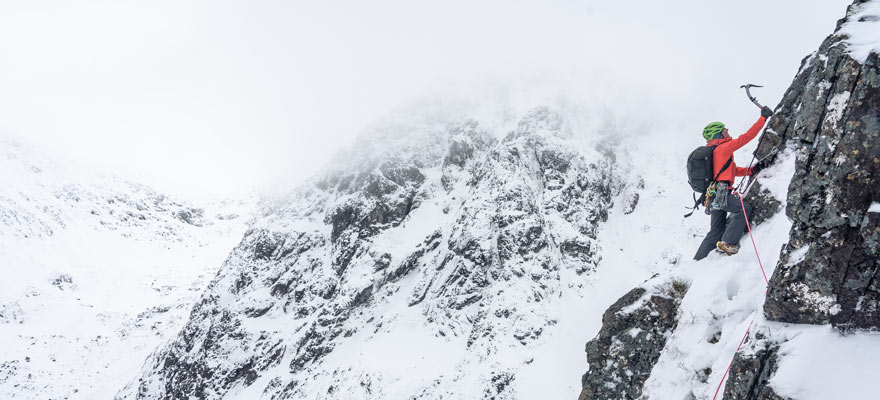
Efficiency
Being efficient in winter climbing is a key, and much of the work can be done through becoming efficient at summer climbing and walking.
In the winter, any extra time spent climbing can quickly lead to you not only being out in cold conditions for longer, but thanks to limited daylight, you could quickly find yourself in darkness. Making sure your ropework, knots, communication and navigation are all up to scratch will all pay dividends in the long run.
Communication
Good communication with your climbing partner is critical. Time is likely to be short and conditions more variable than in summer, and time spent trying to work out what your partner is doing during gale force winds at the top of a mountain could leave you benighted. It is even more important to shout every word individually rather than in a sentence: i.e CLIMB... WHEN... READY.
These tips will hopefully help get you started but should be used alongside training, ideal from a guide, instructor or experienced mentor. that you must use in conjunction with training. When climbing always exercise personal judgment. Enjoy the outdoors, make good decisions and stay safe.

